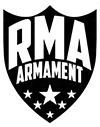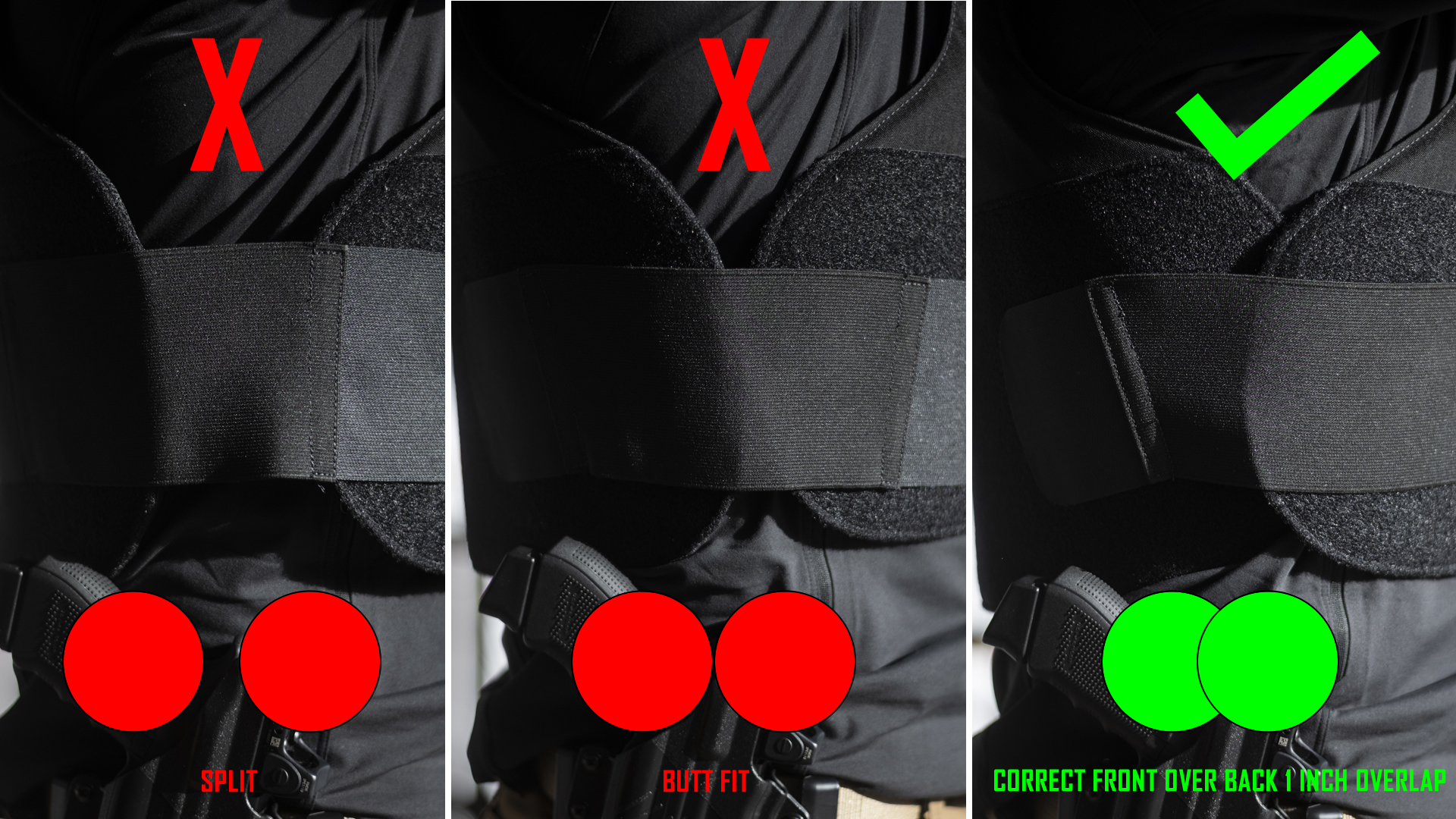Whether you’re in law enforcement or just want to know more about the close-up technical aspects of choosing and wearing body armor, you’ll find your answers below.
Ballistic Vest Partnership (BVP)
In 2022, it’s a near certainty your tribal, state, county, or municipal law enforcement agency is participating in the federal Ballistic Vest Partnership program, or ‘BVP’. If so, your agency will mandate a few things about what kind of body armor you’re allowed to purchase and wear on duty.
BVP mandates NIJ level IIA, II, or IIIA certification for all body armor purchases using these grant dollars. You’ll need to purchase a product listed by the NIJ as a compliant body armor solution found here. RMA’s Protego, Contego, and Virtus vests are all eligible for BVP funded purchases.
BVP also mandates that body armor is worn on duty at virtually all times outside your station, known at your agency as, “Mandatory Wear Policy.”
Uniform Policy
Your department’s uniform policy also determines what armor you’re allowed to wear on duty. Some agencies will not allow rifle-rated armor to be worn during ordinary patrol operations, but it usually is determined by what kinds of armor are compatible with your uniform policy.
For example, you might wear a Blauer Armorskin or Elbeco BodyShield shirt-style outer carrier sleeve with your vest. Since this style carrier is (usually) nothing more than a fabric cover for appearance, it is not load-bearing capable and will not hold any other armor unless otherwise labeled.
Thus, you are limited to what armor your inner (concealable) carrier will hold. In many concealed carriers, you are restricted to a 5 x 8 inch or 7 x 9 inch trauma plate of some kind. With RMA’s Contego ballistic vest package, you can fit all the way up to a 10 x 12 inch plate with front opening access for rapid deployment of special threat, rifle-rated, or other armor solution in addition to your concealed vest.
How to Properly Fit and Wear Body Armor
How your body armor fits you is important. If you are wearing misfit armor, you could be exposing yourself to unnecessary risk and discomfort. A properly fitting vest will be surprisingly comfortable to wear all day long.
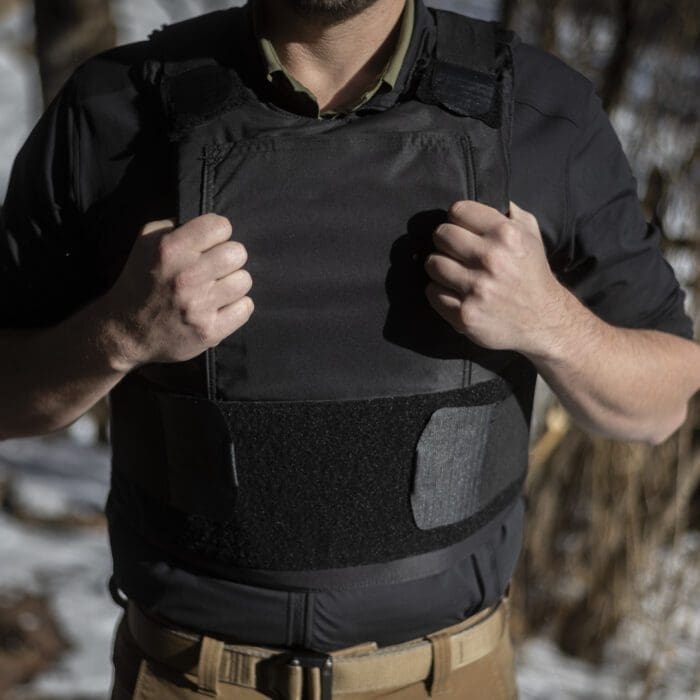
Length
The length of your armor will determine its compatibility with your other equipment. The top edge of your ballistic vest should begin at your sternum—a notch between your clavicle bones in the middle of where your neck meets your chest. It should end where your duty belt begins when you sit down.
Your duty belt and armor should fit together without pushing your vest up into your throat when you sit down. Your torso length will compress by an average of 1-1.5 inches when you sit down, so be sure your vest length leaves about this much space between its bottom edge and your duty belt when you stand up.
Some people choose vests that fit a bit shorter than normal due to ergonomics. The human body bends efficiently at the waist right around the belly button. While this style of cut isn’t necessarily recommended, it can be done to compliment this type of body movement if desired.
Chest Width
Chest width is critical for life and death engagements. Finding the right balance between vital organ coverage and ergonomic performance can impact cardiovascular performance, muscle fatigue, and how well you stay in the fight.
Since nearly all males compress their pectoral width between their biceps to about 12 inches when their hands are clasped in front of them, your vest should be fitted to accommodate this distance. With too little coverage, you’re sacrificing protection in an area with arteries, potentially resulting in catastrophic blood loss. Your size may vary from precisely 12 inches.
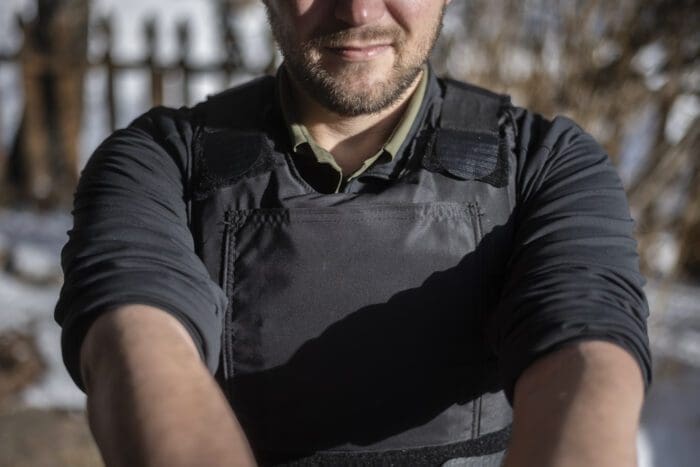
With too much coverage, your biceps will collide with the edges of your vest. When this happens, you’ll notice you must fight against your ballistic vest to be able to use your arms for holding a rifle, pistol, or Taser. This results in the rapid onset of muscle fatigue in your biceps and shoulders. For extended engagements, this unnecessary fatigue can be deadly.
Waist Width
Waist width is commonly overlooked but is a critical part of a proper fitting ballistic vest. The sides of your ballistic panels that wrap around your torso underneath your arms should have a 1-inch overlap.
You do not want what is commonly called a ‘butt fit’, where your panel edges simply meet on the sides without any overlap.
Panels should overlap front to back. You are most likely to be engaged by someone in front of you instead of behind you. With that in mind, your front panel overlapping your back panel will close the separation gap around your waist. If a back panel is overlapped on top of a front panel, you will see the opening from the front side. A bullet entering that opening in your armor won’t necessarily be defeated by the vest. Sometimes, bullets can enter these types of gaps and circulate inside the vest due to the circular geometry at the waist. With nowhere else to go, they will often enter the body and do just as much damage as if you were wearing no vest at all.
A 1-inch overlap on both sides will compensate for horizontal torso expansion during breathing, sitting, and movement. Some agencies like Scottsdale Police Department mandate a 2-inch overlap just to be sure, but it isn’t absolutely necessary.
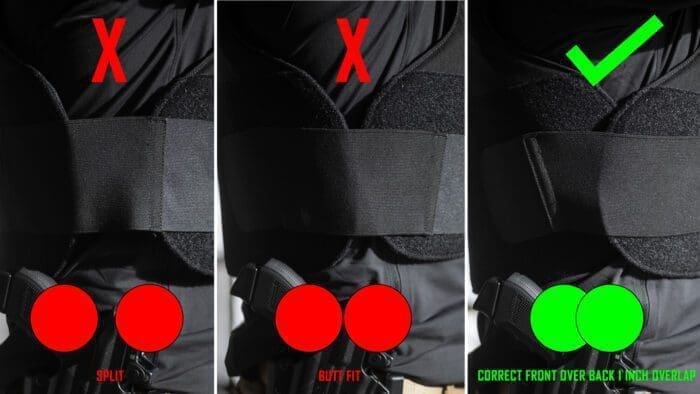
Waist Height
Your ballistic vest panels should have as much coverage as you are comfortable wearing to help cover your lungs on the sides of your vest. Hunters often aim for lungs in big game animals for a quick, clean, and humane kill. If your vest lacks sufficient vertical side coverage under your arms, you are leaving one of your most vital organs exposed to bullets and shrapnel. From the side, it is relatively easy to impact both lungs and the heart with any bullet.
Circumference
Your vest should be able to neatly tuck underneath any items on your duty belt that rise above the belt/vest boundary line, such as a baton or pistol. This is more difficult to achieve sitting down in bodies that carry excessive fat around the hips.
Since heavy duty belts most often need load support by the hip bones to comfortably stay in place, you can end up with a properly fitting vest colliding with the items on your belt if your belt tucks significantly enough underneath your waist such that it creates a mushrooming effect. Because your choice in soft armor essentially comes down to thinness or flexibility (Aramid v. UHMWPE), you can end up in this same collision situation no matter what you choose.
Darting
Many vests worn by female officers today utilize what is known at ‘darting’ to achieve a formed shaped to a woman’s bust. Proper darting depends on a number of factors. Chest circumference at the arm pits, widest part of the bust, width immediately under the bust, bra cup size, type of bra worn on duty, sternum to the widest part of the bust length, and more are all utilized to create custom armor shapes to fit women’s profiles beyond ordinary men’s length and width measurements. Because these sizes and shapes are subject to dramatic change based on water weight, overall weight gain or loss, and what’s in your clean laundry, many women forego bust darting entirely. Unless it fits perfectly, it just doesn’t fit at all.
Some men do utilize darted vests as well, but only those that are extreme body builders that have oversized pectoral muscles will find this type of structure useful. Even so, ballistic vests today have become so thin and flexible that it has largely become unnecessary for men of all body types.
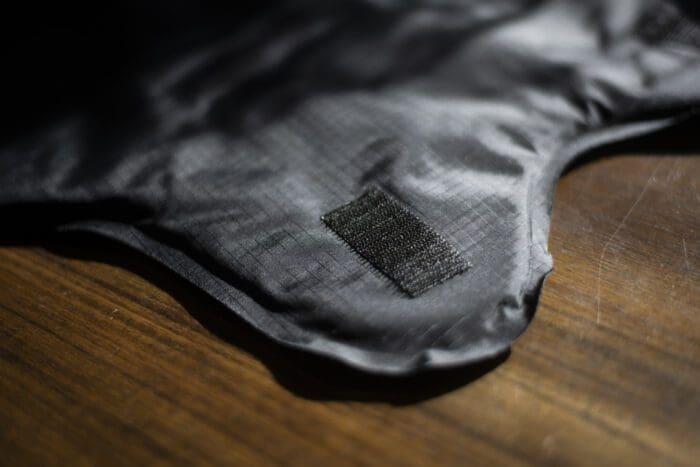
Suspension
Your vest panels will come with small attachment points toward the top of the shoulders that connect your ballistic panels directly to your carrier. This is usually done with Velcro or similar hook-and-loop material like you see here on RMA’s Contego IIIA vest. Critically, a popular new body armor company that popped up a few years ago neglected this feature on their vests and still to this day has not realized the danger they’re putting their customers in since they don’t have any background in manufacturing body armor. You can see them demonstrate this when they freely pull their panels out of their carrier in their promo videos on Youtube. The reason that every other reputable soft armor manufacturer has these on their soft panels is to preserve the integrity of the material. Without panel suspension inside the carrier, your panels will sag as the material breaks in with daily wear, becomes softer over time, and begins to roll on the bottom edge. When this happens, you’ll begin to lose coverage on the top edge of the vest and it will also break open the heat seal on your soft panels, exposing them to all kinds of moisture, bacteria, insects, oxidation, and more. These destructive elements can destroy the protective performance of your vest.
Your ballistic panel suspension must be taken very seriously.
Suspension is the number one reason why your soft armor manufacturer won’t extend your warranty to your panels being used in another manufacturer’s carrier. When you don’t suspend your panels, you are wearing your armor out of spec against how it was tested and approved by NIJ to withstand five years of daily wear. As such, your armor manufacturer cannot be held liable for the inevitable destruction of your armor’s protective properties in less than five years when you misuse it. If your armor doesn’t have panel suspension, replace it immediately with any other vest on the market from a reputable manufacturer.
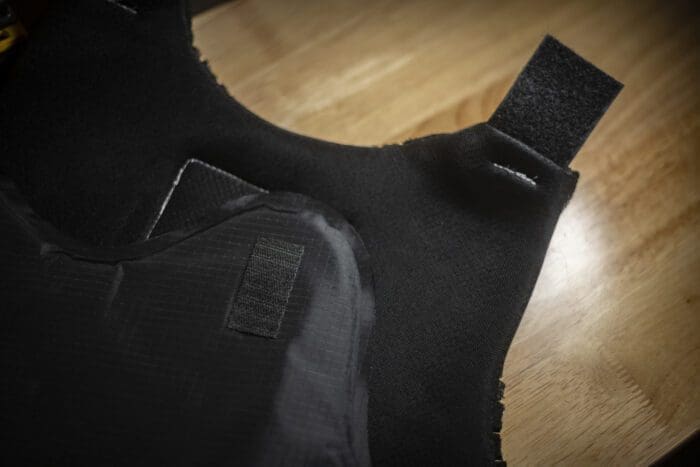
What Kind of Body Armor is Right for Me?
Now that we’ve discussed fit and wear, let’s talk about what kinds of body armor make sense for different situations.
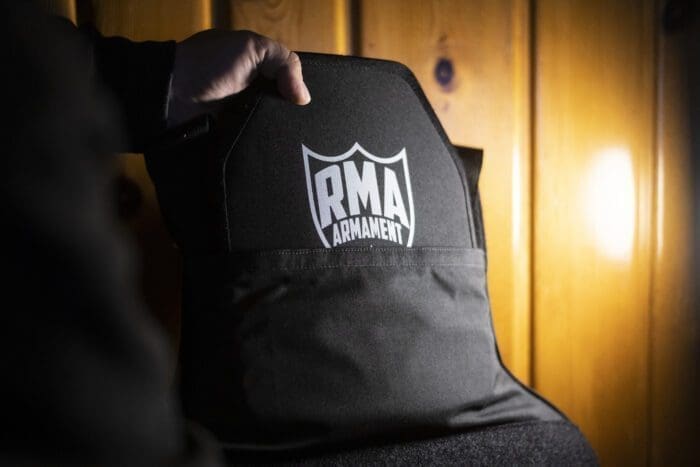
Patrol
In most patrol scenarios, a level II or IIIA vest will take care of the majority of ballistic threats faced by police officers on a regular basis, which stem from handguns by a 4:1 ratio. That’s good, because a soft ballistic vest is a low-bulk, low-weight way to get maximum coverage on your torso.
For most metropolitan-based police patrol officers, there isn’t a lot of value in stacking as much armor as possible into your carrier. While rifle-level threats are always a possibility, they rank substantially lower in a daily risk profile than pistols. For rural municipalities and sheriffs’ offices, rifle threats are substantially greater in likelihood to encounter during patrol duty. For both, there do exist smaller ICW rifle plates that are 5 x 8 or 7 x 9 inches in size that minimize weight and offer rifle-rated protection to vital organs in the torso. These will even fit into most concealable carriers and only cost around $100, making them an excellent upgrade to any officer looking to upgrade their body armor protection.
Having a quick-access and fast-donning full-size 10 x 12 inch plate carrier for rapid use either over a relatively clean patrol carrier or as a replacement for your patrol carrier is becoming commonplace for many patrol units across the country as mass shootings become more sporadic and unpredictable in location and time.
Active Shooter
Very often, patrol units are the first to respond to the scene of an active shooter. Most departments are teaching officers to respond to an active shooter by engaging the shooter as quickly as possible to end the carnage. As such, patrol units must be equipped with weapons and armor that are well-rounded for the situation.
In many active shooter scenarios, the suspect is utilizing an intermediate-caliber semi-automatic rifle such as an AR-15, AK-47, or similar style rifle. Because armor-piercing steel or beryllium copper ammunition is heavily regulated, it is relatively difficult to acquire for most active shooters that are seeking to acquire as much ammunition as possible for the money they have to spend.
The risk profile for armor piercing rifle ammunition flying toward police officers is relatively low. The vast majority of shooters in the past have been using run-of-the-mill lead or mild steel core ammunition like M855. This means the carry weight of a full-strength level 4 plate isn’t necessarily needed or wanted by an officer responding to an active shooter scenario.
Thanks to advances in materials and manufacturing technology, it is now possible to defeat 6 or more non-armor-piercing rifle rounds with a single Level III+ plate. RMA’s 1090 series even defeats mild steel core ammunition commonly used in these scenarios such as 5.56mm MSC M855 and 7.62x39mm MSC, making it the best overall plate for most active shooter situations. The weight savings between Level III+ and Level IV body armor is staggering.
As we used to say in the Marine Corps, ounces are pounds and pounds are pain. RMA’s Level III+ 1090 series plates shave pounds of weight from your response kit versus Level IV plates, while providing substantially better protection and coverage than your soft armor vest; even when you’ve upgraded it with a small ICW special threats plate.
Special Assignments
For special units like SWAT or other direct action elements that work on serving warrants, surveillance, or other high-risk work, the choice is simply Level IV. Because the risk of being fired upon with high power weaponry is substantially higher when dealing with entrenched subjects, you’ll need the maximum protection possible. But that doesn’t mean you have to carry an extremely heavy load, either. RMA’s Lightweight Level IV 1192 plate comes in at only 5.7 pounds and less than 1 inch thick, ensuring you have the highest level of protection with minimal weight and bulk.
Additionally, teams will often utilize additional coverage packages for their soft armor systems.
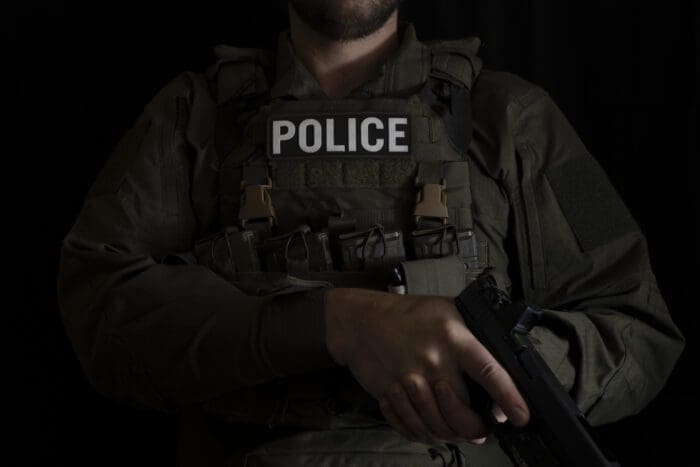
Conclusion
Like tools, cars, firearms, and many other things in this world, body armor isn’t a one-size fits all solution. Even within the police profession, there are multiple types that fill different roles in your department. Make sure you’re adequately prepared for any threat with a IIIA Vest, III+ and IV plates.
Still have questions? Ask us! We’re available on our Facebook page at https://www.facebook.com/rmaarmament or give us a call at 866.978.7103.
